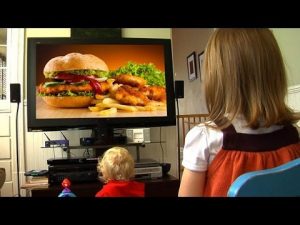If you think you always choose the food you eat, think again. Your thoughts are actually controlled by the information you access every minute. Here we are giving you a helping hand to figure them out.
Offers you can’t refuse

Sponsored Links
Our food industry is a powerful, lobbying force which, overall, makes huge profits, even in times of recession. One of the reasons for this is that it is practiced at capitalizing on all our deepest survival instincts. Its most successful companies know that we still have an inclination to eat when food is there – because tomorrow it may not be. They recognize that it is instinctive to eat food or want food when we see it. They know that it is natural to stock up for possible hard times ahead. And they also know that, as breast milk is sweet and fatty, we have an inborn liking for sweet, fatty foods – one that should fade as we outgrow the breast, but that is easy to nurture and turn into a lifelong addiction.
You need only take a look at one or two issues of the grocery trade’s ‘bible’, , to realize too that the food industry is well aware that the more ‘added value’ products it can sell to us, the more profit there is to be made.
Put simply, there is more money to be made selling a cream cake than there is in selling a carrot. The carrot is a natural product that just needs to be grown, dug up, perhaps washed and sorted, and transported to the shop. But the cake has gone through a manufacturing process which has turned often basically cheap ingredients such as sugar and fat into a relatively expensive product.
And, by producing and promoting ‘added value’ lines, the manufacturers can capitalize on another of our latent instincts – the enthusiasm for ‘novel’ foods. If the customer’s palate becomes a little jaded with one particular kind of fatty, sugary cake, the manufacturer will alter an ingredient, call it something ‘new’ – and there you are, back eating it again.
Self-service: tempting you to buy more

The old-style local grocery shops that largely disappeared when the big supermarkets took off were not designed to get you to buy more food. You went along (probably with a short list) and you asked for what you wanted. Comparatively little food was on display and therefore you were generally not tempted into Impulse buying through spotting something you just had to have. And, as you would probably be walking home, you’d be disinclined to buy too much since it would be too heavy or awkward to carry.
Nowadays, you go to the supermarket – and, if you still have a corner shop, it may have turned self-service too: Usually you get there by car so you can buy as much as you can put in the boot You collect a big trolley, even if you only intend to buy a few goods. The first thing that hits you is probably the aroma of bread baking (which in many cases is piped through to the entrance from the in-store bakery). Just feel your appetite rising!
Sponsored Links
Even if you have a shopping list, as you push your trolley around, you find yourself putting in more and more extra goods. Taste testings, special multi-buy offers, money-off packs, tempting visual displays – and the very need to walk past things you hadn’t intended to buy in order to get to what you did want – all encourage you. Add to that your increasing hunger and then the wait at the checkout, where often you find a display of confectionery, and there you are, buying chocolate bars too!
The power of advertising

Once you get home and switch on the TV or open a magazine, the real persuasion to buy begins. Advertising is what really drives you towards those food and drink products that otherwise you might not have bought.
And, again, it is not carrots (or, generally, any fresh fruit or vegetable) that are being advertised, it is value-added lines. The list of the Top 20 foods advertised on TV is usually composed almost entirely of fatty, sugary and ‘snack’ products. In one year, the food companies spent more money on advertising these Top 20 foods than we as a nation spent on buying one staple ‘healthy’ natural product. Around £2 billion is spent on advertising the Top 20 foods each year – and this doesn’t include confectionery. Over £1 billion a year is spent on advertising sweets and chocolates – a sum that is obviously well worth it as around £40 billion worth of confectionery is sold every year.
The reason these megasums are spent on TV advertising is that it works. When a product is advertised, its sales go up. Retailers are also more likely to stock a new product, or will stock more of an old favorite, if they know it is being advertised on TV or in the media.
The low-fat con

Sponsored Links
Let’s be fair. The food industry has developed a whole array of low- or lower- fat products, such as skimmed milk, low-fat yogurt, low-fat spread and reduced-fat cheese, to meet a growing demand for ‘healthier’ produce from the public. And sales of these reduced-fat items (and other reduced-sugar ones) are growing all the time.
But there is an interesting twist to this. Yes, we are buying more of the reduced-fat items. But, overall, our national fat intake hasn’t decreased in the past decade.
What is happening is that as fast as we swop to skimmed milk, etc. we are replacing that missing fat in our diets with more ‘treat’ items, such as luxury desserts, chocolate and pastries. So while fat and sugar are being removed from one set of products, they are, in effect, being put back into us via another set! For instance, just as we get into the habit of buying low-fat yogurt, we find we can now buy thick, whole-milk yogurts with added cream. Sales of those, and of new luxury ice-cream brands, are rising every week.
